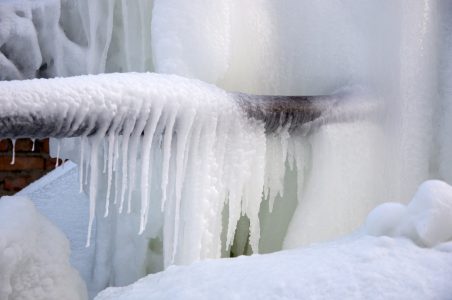Tips to Prevent Frozen Plumbing in Winter: Expert Guidance
Tips to Prevent Frozen Plumbing in Winter: Expert Guidance
Blog Article
Just how do you feel about Preventing and dealing with frozen pipes?

Cold weather can wreak havoc on your plumbing, particularly by freezing pipelines. Below's how to prevent it from taking place and what to do if it does.
Intro
As temperature levels decrease, the risk of icy pipelines boosts, potentially causing expensive repair work and water damages. Recognizing exactly how to prevent icy pipes is critical for house owners in cold environments.
Avoidance Tips
Protecting at risk pipes
Cover pipelines in insulation sleeves or make use of warmth tape to protect them from freezing temperatures. Focus on pipelines in unheated or exterior areas of the home.
Heating strategies
Keep indoor spaces adequately heated up, specifically areas with plumbing. Open closet doors to allow warm air to distribute around pipelines under sinks.
Just how to recognize frozen pipes
Search for reduced water flow from faucets, unusual odors or noises from pipes, and visible frost on exposed pipes.
Long-Term Solutions
Architectural adjustments
Consider rerouting pipelines away from exterior walls or unheated locations. Include additional insulation to attics, basements, and crawl spaces.
Updating insulation
Buy high-grade insulation for pipelines, attics, and wall surfaces. Appropriate insulation helps preserve regular temperatures and reduces the threat of frozen pipes.
Shielding Outside Plumbing
Yard hoses and outside taps
Disconnect and drain pipes yard hoses before winter months. Install frost-proof faucets or cover exterior faucets with shielded caps.
Understanding Frozen Pipes
What creates pipelines to freeze?
Pipes freeze when subjected to temperature levels listed below 32 ° F (0 ° C) for prolonged durations. As water inside the pipes freezes, it increases, taxing the pipeline wall surfaces and potentially causing them to rupture.
Risks and problems
Icy pipes can cause water disturbances, property damage, and costly fixings. Ruptured pipelines can flood homes and trigger comprehensive structural damage.
Indicators of Frozen Piping
Recognizing icy pipes early can prevent them from bursting.
What to Do If Your Pipelines Freeze
Immediate actions to take
If you suspect icy pipes, keep faucets open to soothe pressure as the ice melts. Make use of a hairdryer or towels soaked in hot water to thaw pipelines slowly.
Final thought
Avoiding icy pipelines needs aggressive steps and fast reactions. By recognizing the causes, indications, and safety nets, property owners can shield their plumbing during cold weather.
5 Ways to Prevent Frozen Pipes
Drain Outdoor Faucets and Disconnect Hoses
First, close the shut-off valve that controls the flow of water in the pipe to your outdoor faucet. Then, head outside to disconnect and drain your hose and open the outdoor faucet to allow the water to completely drain out of the line. Turn off the faucet when done. Finally, head back to the shut-off valve and drain the remaining water inside the pipe into a bucket or container. Additionally, if you have a home irrigation system, you should consider hiring an expert to clear the system of water each year.
Insulate Pipes
One of the best and most cost-effective methods for preventing frozen water pipes is to wrap your pipes with insulation. This is especially important for areas in your home that aren’t exposed to heat, such as an attic. We suggest using foam sleeves, which can typically be found at your local hardware store.
Keep Heat Running at 65
Your pipes are located inside your walls, and the temperature there is much colder than the rest of the house. To prevent your pipes from freezing, The Insurance Information Institute suggests that you keep your home heated to at least 65 degrees, even when traveling. You may want to invest in smart devices that can keep an eye on the temperature in your home while you’re away.
Leave Water Dripping
Moving water — even a small trickle — can prevent ice from forming inside your pipes. When freezing temps are imminent, start a drip of water from all faucets that serve exposed pipes. Leaving a few faucets running will also help relieve pressure inside the pipes and help prevent a rupture if the water inside freezes.
Open Cupboard Doors
Warm your kitchen and bathroom pipes by opening cupboards and vanities. You should also leave your interior doors ajar to help warm air circulate evenly throughout your home.

I have been very serious about How to prepare your home plumbing for winter weather and I am assuming you enjoyed reading my entry. Sharing is good. Helping others is fun. I am grateful for your time. Return soon.
Try Here Report this page